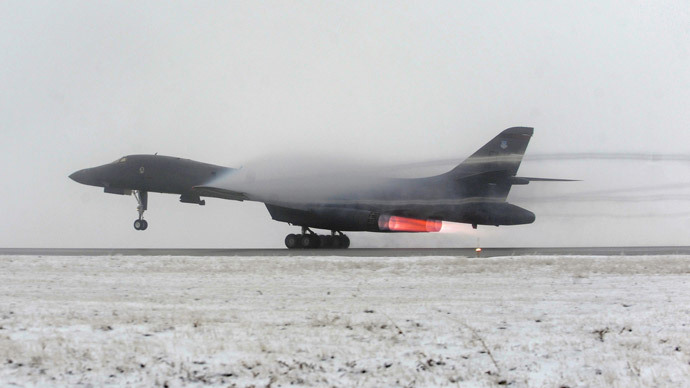
(March 29, 2019) — A Pentagon official has said that the US will retain the right to carry out a nuclear strike in response to a conventional attack. A ‘no-first-use’ policy would erode US allies’ belief that they are protected, he said.
Washington has no plans to reverse its policy of “no first use” of nukes, which means it can bomb its adversaries with nuclear weapons under “extreme circumstances,” Deputy Undersecretary of Defense David Trachtenberg said in his prepared remarks to the Senate Armed Service Committee hearing on Thursday.
Trachtenberg claimed that if the US changes its take on the issue, which he described as “constructive ambiguity,” it “would undermine US extended deterrence and damage the health of our alliances because it would call into question the assurance that the United States would come to the defense of allies in extreme circumstances.” This uncertainty might prompt these countries to arm themselves with nuclear weapons, he said.
The hawkish Nuclear Posture Review (NPR) commissioned by President Donald Trump in 2018 lists a range of circumstances under which the US might consider striking first, such as significant strategic attacks on the US, allied or partner civilian infrastructure, forces, their command and control, as well as warning and assessment capabilities with conventional weapons.
That clause represents a major shift from the previous US nuclear doctrine, and has drawn strong criticism from Moscow, which accused Washington of lowering the nuclear threshold and exacerbating the nuclear arms race. In addition to threatening nuclear annihilation, the review sets the stage for upgrading and expanding the already vast US nuclear arsenal. The nuclear build-up envisions developing new types of low-yield warheads that could be placed on submarine-launched ballistic missiles and on sea-launched cruise missiles.
The “mini-nuke” produced by the Pantex plant in Texas has the relatively small explosive power of around five kilotons of TNT, in an attempt to make the US deterrent more “flexible.” According to some experts, it can be launched from the B-21 Raider heavy bomber, which is being developed, making a preemptive nuclear raid more of a probability.
Russia and its weapons modernization program has been singled out in the review as one of the reasons for a major build-up of the US nuclear triad. But unlike the American one, the Russian military doctrine allows the use of nukes only if under attack by weapons of mass destruction or when Russia’s sovereignty is at stake.
While reinforcing its own nuclear deterrent, the US plans to spend billions of dollars upgrading its 150 B61 nuclear bombs scattered across its four European allies: Germany, Belgium, Italy, and the Netherlands – as well as Turkey.
Russia has repeatedly warned Washington that the deployment of the new bombs would violate the Non-Proliferation Treaty.
Less fallout, more danger: US ‘low-yield’ warhead pushes Doomsday Clock closer to midnight
Senators propose change of doctrine so Russia could respond with nukes to any ‘strategic strike’
US Grounds B-1B Bombers for 2nd Time after Problems with Pilot-saving System

(March 30, 2019) — The Pentagon has grounded its entire fleet of B-1B Lancer strategic bombers for the second time in less than a year after new dangerous flaws were found in its ejection system.
The bombers were suspended from flight as a “precautionary measure” after a routine inspection discovered “potentially fleet-wide issues” with the system, the Air Force Global Strike Command reported on Thursday.
The problem was found in the rigging of the “drogue chute,” a parachute connected with the pilot’s ejection seat. Flight technicians will now check each of the 62 active B-1Bs. The command’s spokesperson declined to comment on how long the whole check-up may take.
This is the second time in less than a year when the military was forced to ground all of its B-1Bs. The planes were previously put on stand-down for around three weeks after a jet from the Dyess Air Force Base in Texas suffered an engine malfunction mid-air.
The pilot tried to eject but had to conduct a risky emergency landing instead because his seat failed to deploy. The Air Force has since said that the problem was fixed and the current grounding is unrelated to the last year’s incident.
The B-1B Lancer is one of Pentagon’s three active long-distance strategic bombers. Developed in the Cold War era, it was conceived as an aircraft that would carry out nuclear airstrikes against the Soviet Union in the event of a global conflict, and has remained a vital part in US contingency plans.
According to some reports, the aircraft will be phased out by the mid-2030s in favor of the new B-21 Raider stealth bomber.
Posted in accordance with Title 17, Section 107, US Code, for noncommercial, educational purposes.